In this post, we'll define what the metaverse is, show a few examples of how the metaverse is used, and provide several ways to think about the metaverse.
Gartner expects that by 2026, 25% of people will spend at least one hour a day in the Metaverse for work, shopping, education, social media and/or entertainment. Source: (gartner.com)
What is the metaverse?
The metaverse is a shared, virtual space where people can meet, interact and do business. It's a bit like the internet, but with more user interaction and richer content.
There are many different types of metaverses, but they all have three things in common:
1. A shared, virtual space: Metaverses are created by computer code and designed to be inhabited by humans (or avatars, which are digital representations of humans).
2. User interaction: In a metaverse, users can interact with each other and with the environment around them.
3. Rich content: Metaverses are designed to be immersive and engaging, with rich 3D graphics and audio.
While the term has been floating around for the last few years, the word “metaverse” was actually coined by author Neal Stephenson in his 1992 sci-fi novel Snow Crash. In his book, Stephenson referred to the metaverse as an all-encompassing digital world that exists parallel to the real world. But in 2022, experts still aren’t sure whether the metaverse IRL could evolve into something similar.
“The metaverse is a 3D version of the Internet and computing at large,” Mathew Ball, a venture capitalist and angel investor who’s written a series of essays about the potential and structures of the metaverse, told VICE.
According to Ball, there are two ways to place this in the current context.
“When these two technologies (internet and computing) first emerged, all interactions were primarily text-based (emails, messages, usernames, email addresses). Then they slowly became more media-based (photos, videos, livestreams). The next elevation of user interface and user experience is into 3D. Secondly, if we think of [a] mobile [phone] as placing a computer in our pocket and the internet being available at all times, think of the metaverse as always being within a computer and inside the internet.”
Many experts look at the metaverse as a 3D model of the internet. Basically, a place parallel to the physical world, where you spend your digital life. A place where you and other people have an avatar, and you interact with them through their avatars. Some also argue that the metaverse in the truest sense of the term doesn’t actually exist yet.
“It’s not real at this stage, and won’t become real until people have a single location they can go to to get into in a virtual world they could live in,” Ibrahim Baggili, a cybersecurity expert and the founding director of the Connecticut Institute of Technology at the University of New Haven, told VICE.
Essentially, the metaverse is supposed to be a 3D version of the internet that is seen as the logical next stage of development, and would ideally be accessed through a single gateway.
“The internet was described as an ’information superhighway’ in the 90s, but it was more of just a term to refer to a potential future with networked computers rather than an actual highway,” said Timoni West, a vice president who oversees the AR and VR departments at Unity Software, a company that builds graphics engines for game development. “As it develops, the metaverse will also have equivalence to the real world and be much more distributed, democratic, fluid and varied,” she told VICE.
While the discourse on defining the metaverse differs from case to case, it is, in the simplest terms, a shared virtual space that is interactive, immersive and hyper-realistic. It would also include your own customized avatar and digital assets, which will likely be recorded on a blockchain. Source: vice.com
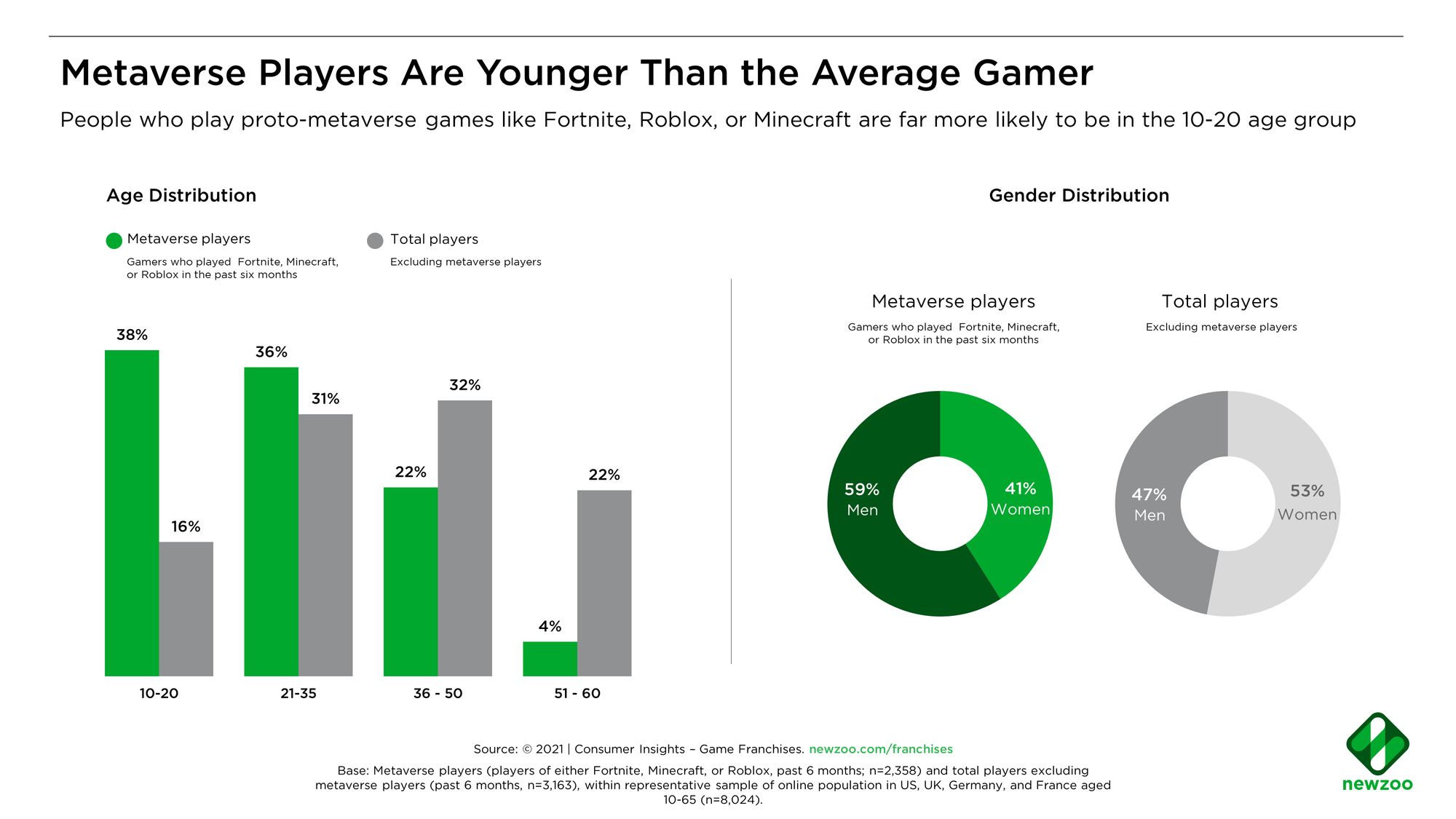
How is the metaverse different than web3?
The metaverse is often seen as the next step after web3.0, or the third generation of the internet. While web3.0 is focused on decentralization and data ownership, the metaverse is a more immersive and interactive digital world that would exist parallel to our physical world. In order to access the metaverse, users would likely need to create their own avatar, which would be stored on a blockchain. NFTs (non-fungible tokens) could also play a role in the metaverse, as they could be used to represent digital assets and experiences.
Why is the metaverse important?
- It could be the next internet.
Alongside a three-dimensional VR metaverse, there's another similar concept that's gaining traction: Web 3.0. Leslie Shannon, Nokia's Head of Trend Scouting, mentioned this in a VRARA Global Summit talk, speaking about the importance of the metaverse or a spatial internet.
Meanwhile, Deloitte already has a framework in place for the spatial web and Web 3.0, concepts closely linked to the metaverse.
Further, Mark Zuckerberg referred to the metaverse as an “embodied internet” in his Founder's Letter announcing Facebook's rebrand.
All of this points in one direction: the metaverse could be the next major online destination where global users congregate, engage, buy, sell, play, and work. It will start out as an alternative to social media and eventually come to encompass the world wide web as we know it.
2. Work and collaboration will consistently move into the metaverse.
Already in 2020, VR adoption for work, collaboration, and learning/education has increased.
Spatial that provide a VR alternative to Zoom saw a 1000 percent uptick in usage in this period, and Facebook came out with its own offering called Oculus for Business.
As companies recalibrate around employee expectations and requirements during the new normal, VR will be an important enabler. It will help workers transition to hybrid work and ensure that remote employees enjoy the same degree of engagement and access as their in-office counterparts.
In a recent survey , nearly 2 in 5 respondents said that they are very excited for AR/VR-enabled learning in the workplace. And, as Zoom fatigue sets in, the metaverse could be a compelling alternative for many.
3. There are exciting investment opportunities to be had.
The metaverse will inspire a bustling new economy at every level. For content creators and VR developers, it means another source of monetisation.
A crypto-based economy would also allow fairer incentivisation of content and regular royalties. Apart from this, venture capitalists are also eager to get in on the early action in the metaverse market and invest in promising startups. Any one of these startups could be your new Facebook, and early investors could shape progress for several years to come.
Once the metaverse is executed, there will be new opportunities through advertising, digital events, e-commerce, etc. – a $1 trillion opportunity by expert estimates Finally, let's not forget the job creation potential of the metaverse. Facebook announced that it would create 10,000 new job openings in Europe alone to build its vision for the metaverse.
Nike has started hiring for virtual material designers for its own “ Nikeland ” and there were active vacancies mentioning the metaverse in October 2021. Professionals, in future, will find it difficult to ignore this trend.
4. The metaverse has major legal and regulatory implications.
Just like tech giants now dominate the global conversation around user privacy, data rights, cybercrime, and regulations, the metaverse could be the next minefield.
Right now, early WIPs of the metaverse suggest several risks while also being extremely exciting. NFT fraud is a very real possibility, land rights in the metaverse could be in question, and avatars – an extension of your real identity – open up challenging questions.
Today, even if you aren't a Facebook or Twitter user, it is difficult to avoid concerns around data privacy and misinformation. The same will be true for the metaverse a few years down the line.
That's why organisations, regulatory bodies, advocacy groups, and individual users need to consider this as a “big deal” to pre-empt similar or even more complex repercussions later down the line.
5. Governance
The metaverse will need rules of engagement for users, rules for how the metaverse itself can change over time and enforcement mechanisms, including for tax collection, data governance and regulatory compliance. Early movers may be able to help set these rules. Security will be paramount, as a new, decentralized digital world may offer malicious actors a new world of entry points for attack. Authenticity and trust more broadly should also be front and center, to reduce the disinformation that has often plagued the internet.
6. Persistence
A true metaverse should reflect in real time the changes made in it by different participants, entering and leaving it in different ways, in different places, at different times. When you take your metaverse headset off, the metaverse and other participants will continue their activities uninterrupted, with (for example) smart contracts enforcing agreements and trading assets. This persistence will likely require a new approach to digital assets and activities, including services and applications that are portable, dynamically configurable and extensible.
Since no true metaverse exists yet, but many of its concepts are already business-relevant, many companies would benefit from taking six measured actions. The first three focus on opportunities and use cases available today. The next three will help build the capabilities that will help support metaverse success tomorrow.
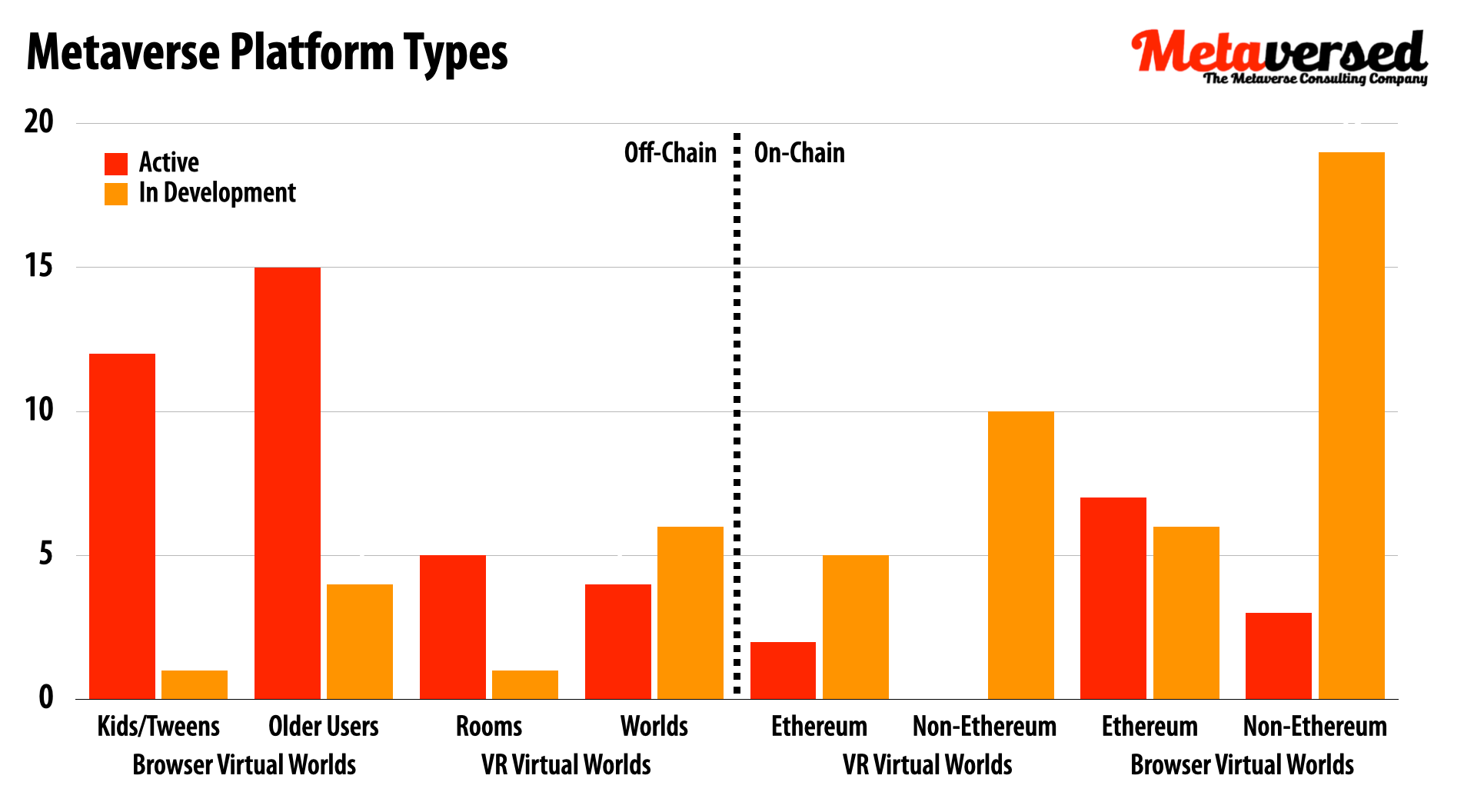
7. Near-term actions
Get up to speed. Most companies even many technology companies lack institutional familiarity with the metaverse's concepts, which are evolving quickly. Many may also lack the skills and processes to truly understand and trust their digital transactions and investments. Assign at least one resource or source of knowledge (such as a group) to understand key concepts such as cryptocurrencies and decentralized autonomous organizations and their relevance to your company, and to follow the metaverse as it evolves.
Develop a strategy. Identify gaps to close and long-term opportunities to build from the metaverse and its key concepts, then work on foundational measures. Many companies, for example, will likely benefit from recruiting digital native employees already at home with the metaverse's key concepts, as well as technical measures such making services extensible, developing plans for security and identity, and publishing application programming interfaces (APIs) to core systems so others can connect.
Test the waters. Select a few opportunities available within the metaverse's underlying trends today. Lower-risk use cases include selling digital versions of physical goods, offering virtual tours of virtual products or facilities, and launching NFTs to enhance brand awareness and connections to customers. Companies may also wish to consider buying or leasing digital real estate for sales, advertising and customer support. Digital real estate is likely a higher-risk option, since no individual digital worlds have yet proved that they will have lasting relevance, but it may be a reasonable choice for some companies to consider. Source: pwc.com
8. It will be entirely democratized for all users
Metaverse platforms will have a democratized architecture, meaning that no single individual, group, or organization has ownership over its operations. Anyone with a stake in the platform's cryptocurrency will have a say in daily decision-making.
The decentralized nature of the Metaverse will entirely transform how the digital world operates. For instance, it may no longer be possible to roll out a sweeping algorithm change without user consent.
9. A lot of the Metaverse will be open-source
Although startups and companies are mostly building the Metaverse, a lot of its source code is available as open-source through Metaverse projects on GitHub and even VR world creation platforms like Vircadia.
Even global tech giants such as Meta have also embraced open source in a big way with its technologies for image synthesis, hierarchical visibility, AI, and others, available to developers.
10. It will transform how we interact with information
Today, we interact with online information in a two-dimensional format. There are texts and visuals, a 2D screen, and a passive user who enjoys limited interactivity through input peripherals that have been in use for decades.
The metaverse is the first major revolution in input-output exchanges since the invention of the mouse. A combination of hand controllers, eye tracking, and voice commands will allow users to interact with visualized data as if it were the real world.
11. It will have major implications for accessibility
The Metaverse could make the internet more accessible to all and has particularly important implications for those living with a disability. For example, users with mobility impairment in the lower limbs can move around freely inside the Metaverse through different forms of gestures.
AI-based captioning and auto-translation could also help overcome hearing impairment and language barriers. However, more research is required for these solutions, and VR hardware has to factor in accessibility needs.
12. The Metaverse could advance scientific research
The Metaverse could leapfrog scientific research by several years, especially in healthcare, aerospace, manufacturing, and a host of other fields.
For instance, professionals in the pharmaceutical field can simulate the molecular structure of a vaccine in 3D, and then meet with project stakeholders in a VR environment. The Metaverse can fast-track approvals, boost error detection, and increase success rates.
13. It can become the universal digital destination
The Metaverse could eventually become a digital destination where all of us “hang out,” just like with social media today. It will determine friendships, relationships, and interpersonal dynamics, and could enable people from across the world to meet face-to-face without having to travel.
As a result, brands and marketers could also leverage the Metaverse for high-traffic advertising. Source: xrtoday.com
14. Economy
Companies will need to transition their marketing strategies from online ad buys to existing in a shared, virtual economy. Companies will need to do market research on their new customers in the metaverse. How people act and what their preferences are in the metaverse could be totally different than how they behave and what they shop for in real life. Add to that the layer of business to robot to consumer, where virtual assistants and robots own the relationship with the consumer and it all starts to make sense.
While there are sure to be ads in the metaverse, brands can actually be part of creating the metaverse itself. Frederic Descamps, CEO of Manticore games said, “Even in [the film] ‘Ready, Player, One,’ who actually made the Metaverse there? It will be all about the act of creation.” Brands should approach this with responsibility and ethics and not make our world one giant ad. This is of the utmost importance. Source: forbes.com
15. Linking digital assets to real-world economic activity in the metaverse
The metaverse is also expected to have a strong connection with the real-world economy – and eventually become an extension of it. In other words, the metaverse must have the ability for companies and individuals to participate in economic activity in the same way they do today. Simply put, this means being able to build, trade and invest in products, goods and services.
To a certain extent, this may rely on non-fungible tokens (NFTs) as the foundation for value creation. A NFT is a claim of ownership for a unique, non-interchangeable digital asset that is stored on a blockchain. If NFTs become a commonly adopted tool for trading such goods, they could help accelerate the use of XR ecosystems as places people go to combine elements of the digital economy with their offline lives.
One way to think of this process is how the App Store encouraged businesses to digitize their operations, so that consumers could experience (and pay for) their products and services from any location. This legitimized the idea that retail and digital need not be separate, paving the way for a whole host of use cases that might not initially have made sense.
For example, it is plausible that Peloton, a company producing exercise equipment and video-streamed fitness classes, would not exist without the App Store. Without a widely adopted medium for digital consumer experiences, a service literally grounded in physical activity would have a weak business case for going online.
A successful vision of the metaverse sees transformations like these taking place at an accelerated pace and universal scale. Source: weforum.org
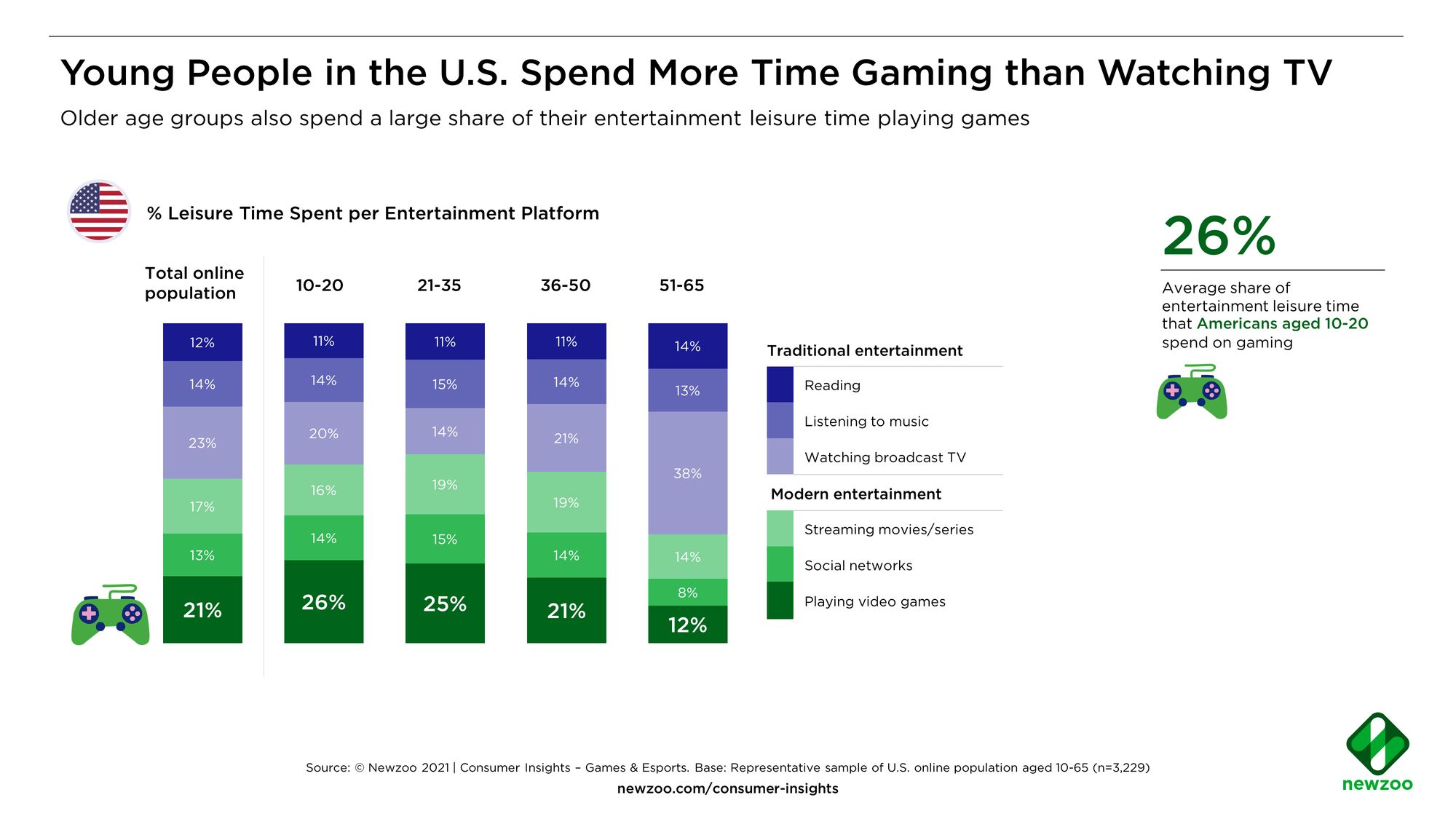
How do NFTs fit into the metaverse?
Nonfungible tokens (NFTs) figure to play a big role in the usefulness and popularity of the metaverse. NFTs are a secure type of digital asset based on the same blockchain technology used by cryptocurrency. Instead of currency, an NFT can represent a piece of art, a song or digital real estate. An NFT gives the owner a kind of digital deed or proof of ownership that can be bought or sold in the metaverse.
Metaverse Properties bills itself as the world's first virtual real estate company. The company acts as an agent to facilitate the purchase or rental of property or land in several metaverse virtual worlds -- including Decentraland, Sandbox, Somnium and Upland. Offerings include conference and commercial spaces, art galleries, family homes and "hangout spots."
While the metaverse has created opportunities for new companies such as Metaverse Properties to offer digital goods, established brick and mortar companies are also jumping in. For example, Nike acquired RTFKT -- a startup that makes one-of-a-kind virtual sneakers and digital artifacts using NFTs, blockchain authentication and augmented reality. On its website, RTFKT said it was "born on the metaverse, and this has defined its feel to this day."
Prior to the acquisition, Nike filed seven trademark applications to help create and sell virtual sneakers and apparel. Nike and Roblox also partnered on "Nikeland," a digital world where Nike fans can play games, connect and dress their avatars in virtual apparel.
"NFTs and blockchain lay the groundwork for digital ownership," said Nick Donarski, CEO of ORE System, an online community of gamers, content creators and game developers. "Ownership of one's real-world identity will carry over to the metaverse, and NFTs will be this vehicle." Source: techtarget.com
Metaverse companies
Epic Games
Epic Games, makers of the popular online shooter game series Fortnite -- with some 350 million users -- and the Unreal Engine software for game developers, planned to stake a claim in the metaverse following a $1 billion round of funding in 2021. This included $200 million from Sony Group Corp.
Epic Games' vision of the metaverse differs from Facebook's in that it wants to provide a communal space for users to interact with each other and brands -- without a news feed riddled with ads.
"I strongly believe that this aligns with our purpose to fill the world with emotion, through the power of creativity and technology," said Kenichiro Yoshida, chairman, president and CEO at Sony Group Corp. in a statement.
Microsoft
The metaverse is coming to Microsoft Teams -- the software giant's online meetings competitor to Zoom. Microsoft said it will release Mesh for Microsoft Teams in 2022. The new service lets Teams users in different physical locations join collaborative and shared holographic experiences during virtual meetings.
Microsoft said Mesh will let users establish a virtual presence on any device using a customized avatar of themselves. This builds on the earlier announcement of Mesh for Microsoft, a platform for developers that includes a suite of AI-powered tools for avatars, session management, spatial rendering, synchronization across multiple users and "holoportation." Holoportation is a 3D capture technology that lets users reconstruct and transmit high-quality 3D models of people in real time.
Microsoft has already been working with professional services firm Accenture to create Mesh-enabled immersive spaces. Accenture hires more than 100,000 people every year and uses Mesh to help onboard new employees.
New hires meet on Teams to receive instructions on how to create a digital avatar and access One Accenture Park -- a shared virtual space that's part of the onboarding process. The futuristic amusement park-like space includes a central conference room, a virtual boardroom and digital monorails that new hires use to travel to different exhibits. Source: techtarget.com
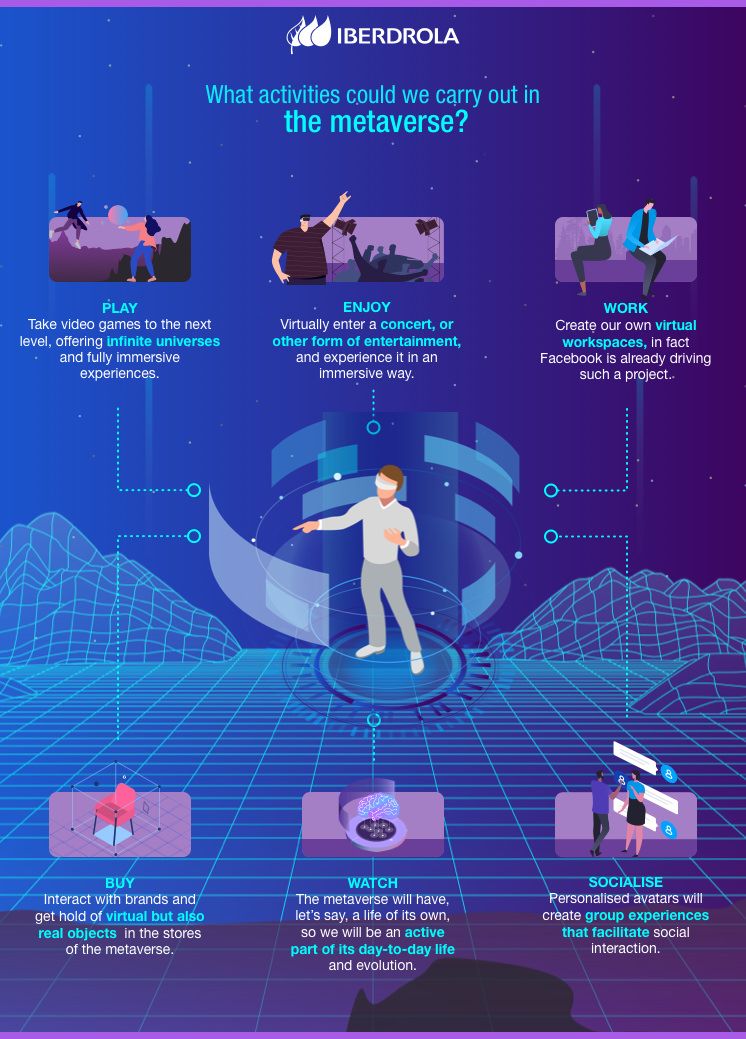
Examples of the Metaverse
Ready Player One
The virtual world in the New York Times bestselling book Ready Player One is probably the best example of what the metaverse might look like.
In this science fiction novel set in 2045, people find an escape from a real world destroyed by climate change, war, and poverty by taking refuge in OASIS, a massive multiple online role-playing game (MMORPG) and virtual society with its own currency
Curious about what Ready Player One’s metaverse might look like? Get an inside peek at director Steven Spielberg’s vision of the OASIS from the movie trailer:
Fortnite
In the last few years, Fortnite’s CEO, Tim Sweeney, has made overt references to establishing Fortnite as more than just a game. In 2020, 12.3 million people attended a virtual concert by rapper Travis Scott within Fortnite, making it the game’s biggest event ever.
Facebook’s Horizon
Facebook is also positioning itself towards the metaverse with its expanded VR world, Horizon (currently in beta). Facebook describes Horizon as “a social experience where you can explore, play, and create with others in VR.” Get a preview here:
Somnium Space
Somnium Space is a VR world-builder platform that supports virtual real estate trading and ownership. It is built on blockchain architecture and has its own in-app currency called Somnium Cubes that can be used to purchase properties. The sale of VR property acts as the primary funding for the platform, and in-platform real estate can be used for things like social networking, e-commerce, gaming, and events.
IMVU
IMVU is a large avatar-based 3D social network where users can interact with friends, shop, hang out at gatherings, and earn real money by creating virtual products. The platform’s 7+ million users spend an average of 55 minutes a day on the site.
The metaverse will require countless new protocols, technologies, and innovations if it’s going to work. There won’t be a significant “flipping of the switch” moment where the metaverse explodes into existence. Instead, the metaverse will likely emerge over time as different products and services. But the potential for individuals and businesses is enormous.
If you would like to learn more about the rise of virtual and augmented reality, check out my articles or my book, Extended Reality in Practice: 100+ Amazing Ways Virtual, Augmented, and Mixed Reality Are Changing Business and Society. Source: bernardmarr.com
Gucci – Gucci Garden
Concurrent with the unveiling of Garden Archetypes, an immersive multimedia experience, Gucci teamed up with Roblox to release Gucci Garden, a unique and interactive virtual exhibit. As visitors entered the Gucci Garden, avatars became neutral mannequins. Wandering through the different rooms, each visitor’s mannequin absorbs elements of the exhibition. With every person experiencing the rooms in a different order and retaining other fragments of the spaces, they emerge at the end of their journey as one-of-a-kind creations.
Coca-Cola – Tafi
Coca-Cola partnered with Tafi to design virtual wearables for Coca-Cola’s first-ever non-fungible token (NFT) collectibles in the metaverse to celebrate International Friendship Day. Coca-Cola auctioned an NFT loot box on OpenSea, containing digital apparel that can be worn in the virtual world of Decentraland. The Coca-Cola Friendship Box, a reimagined version of Coca-Cola’s highly collectible vending machine, itself an NFT, once opened contains a futuristic Coca-Cola Bubble Jacket Wearable, a Sound Visualizer to capture the experience of sharing a Coca-Cola, and a Friendship Card inspired by Coca-Cola’s trading cards from the 1940s.
Nike
In December Nike announced the acquisition of RTFKT, a non-fungible token studio that produces digital collectibles (including digital sneakers) to merge culture and gaming. Previously RTFKT collaborated with teenage artist FEWOCiOUS to sell real sneakers paired with virtual ones, selling 600 pairs and NFTs in six minutes and netting over $3.1 million.
The acquisition follows Nike’s recent filing of seven new trademark applications that indicate its intent to produce and sell Nike-branded virtual footwear, apparel, and accessories for use in virtual environments. Source: practicalecommerce.com
DECENTRALAND
It is a virtual reality platform supported by Ethereum. In this virtual world users can buy plots of land then they can walk around, build on them and monetize them. There is no limit to what users can do. It is the first digital platform that is completely owned by its users.
SANDBOX
It is a virtual open world, based on the Ethereum blockchain, that allows its users to build, play, own and monetize their virtual gaming experiences and ideas.
It was created in 2018 by the US video game development company, Pixowl, building on the idea of two video games with the same name that they designed years earlier: The Sandbox (2011) and The Sandbox Evolution.
Interestingly, both games were successful and, together, generated 40 million downloads on iOS and Android gaming platforms. As a result, its creators decided to take the The Sandbox’ metaverse to a whole another level: blockchain technology.
Source: cronuts.digital
Burberry Designs a Game Heroine's Outfits, Then Sells Them to Consumers
Product placement in the media has been going on at least since the 1920s . This strategy embeds products seamlessly in ongoing stories, such as a character that happens to drink Coca Cola while she's already at a restaurant. According to a 2019 study , “prominent product placement activities – especially verbal placements – are associated with increases in both online conversations and web traffic for the brand.” In 2021, Burberry took this strategy to the virtual world. It designed two outfits for the protagonist of the Honor of Kings game. The outfits included Burberry's logo, so gamers were able to identify the brand. They could then search for these outfits online or in Burberry's brick and mortar stores… and buy them for themselves.
Louis Vuitton Creates a Virtual Game that's Basically a Brand History Course
Louis Vuitton also ventured into gaming, but it actually created its own game. To celebrate its 200th anniversary, it introduced Vivienne, the game's protagonist, who travels across the virtual globe in an attempt to find 200 birthday NFT candles. Players who join her can collect NFT candles and unique accessories themselves, and even win some awards.
But what's that got to do with the brand?
Each NFT candle Vivienne finds during the game unveils milestones of the Louis Vuitton story. Kinda like a gamified brand history course.
Source: teamworkcommerce.com
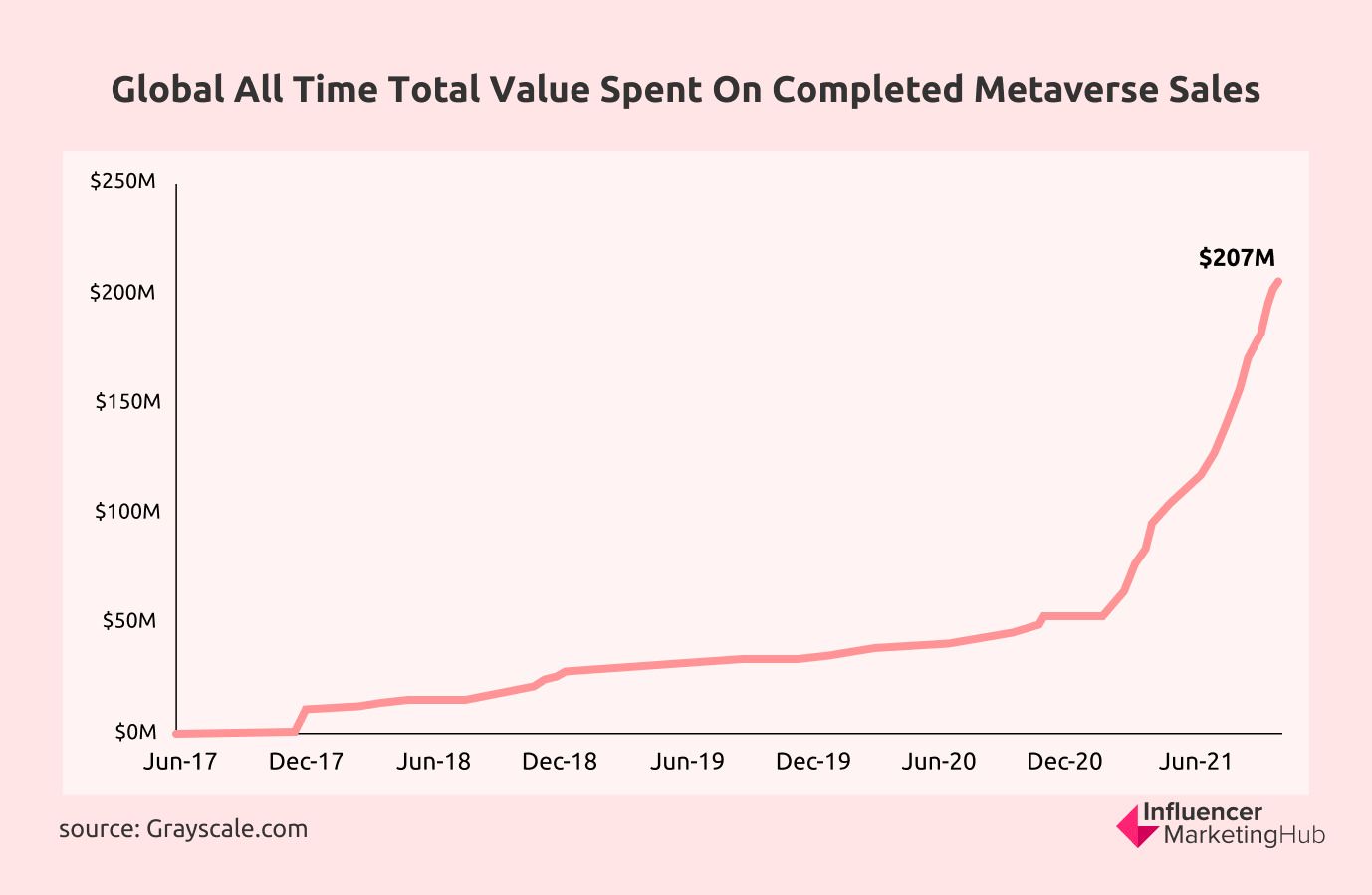
Why the Metaverse Matters for Businesses
While the metaverse is still in its infancy, dismissing it would be economic suicide for any business. Beyond tech giants like Microsoft and Facebook, other large brands have been making forays into the metaverse. For instance, fashion heavyweight Gucci launched a virtual gallery recently, while JP Morgan recently opened a building in Decentraland.
As an immersive virtual-reality world, the metaverse has a lot of business potential.
Profits from Virtual Products
The virtual economy is booming. Sales of digital assets on virtual platforms like Decentraland, Fortnite, Roblox, and the Sandbox run into millions of dollars—representing a viable business opportunity. Brands can create virtual lookalikes of real-life products to metaverse residents and unlock new streams of revenue.
The list of companies already selling things in the metaverse is long. Earlier this year, Ralph Lauren launched a collection of wearables and has sold over 100,000 pieces already. Other luxury fashion houses, such as Gucci and Dolce & Gabbana, have also started creating virtual clothing lines.
Even sports apparel makers are getting in on the game. American sportswear giant Nike acquired RTKFT, a company noted for creating virtual products and has filed patents that’ll allow it to exclusively sell Nike-themed wearables, like Air Jordan sneakers, in the metaverse.
Smaller businesses can benefit from this trend, too. For example, a glasses manufacturer might offer buyers a pair as an NFT, while encouraging them to buy the real thing. As long as a product can be represented in virtual reality, there’s going to be a market for it.
Gucci “Virtual 25” shoes are created exclusively for AR worlds.
Richer Customer Experiences
The introduction of eCommerce changed the way people shopped for products. However, customers are quickly outgrowing staid online shopping sites. They want an experiential buying experience where they can feel, see, and touch products before buying.
Companies can provide new ways for consumers to interact with products and services using augmented reality (AR) and virtual reality (VR) technologies. Instead of staring at static images, buyers can use products and see if they like the experience. If an individual feels good trying on virtual glasses, they’re more likely to buy the real product.
Some brands are already launching virtual malls, where anyone can come in and interact with branded items. Such innovations will greatly accelerate the buyer’s journey, reduce acquisition costs, and increase overall revenues.
Virtual malls may become the new shopping centers.
Global Reach
Just as the Internet broke down geographical boundaries, the metaverse will do the same—but better. An ideal metaverse is a place where anyone can enter and interact with a brand, regardless of their location. For brands, the metaverse facilitates the creation of universally accessible experiences for customers across the world.
Often, global companies will launch different campaigns in various countries to compensate for distance. However, the metaverse world would allow a brand to house its campaigns in one place, which users from different regions can access at any time. It’s global expansion for a fraction of the cost! Source: businesstechguides.co
Conclusion
The metaverse is a vast, immersive virtual reality world with immense business potential. Brands can create virtual lookalikes of real-life products to sell to metaverse residents, providing a new stream of revenue. Additionally, the metaverse allows for richer customer experiences and global reach for companies. To learn more about the metaverse and how your brand can take advantage of this new technology, contact us today.





